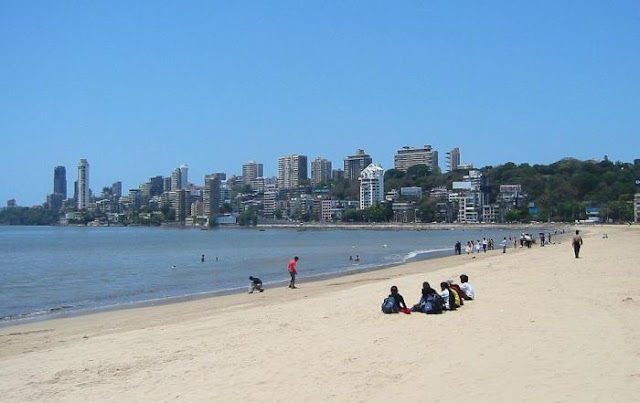Girgaum Chowpatty
The Girgaum Chaupati Beach
Highlights/Famous For: Local delicacies
Nearby Tourist Attractions: Marine Drive, Crawford Market, Mahalakshmi Racecourse
How to Reach: One can hire an auto or taxi to reach the destination. Churchgate station is the nearest railway station.
Timings: N/A
Entry fee: N/A
Chowpatty Beach MumbaiChowpatty Beach is one of the most famous beaches in Mumbai. Located in the heart of the city, this beach is most popular for its local delicacies which most people enjoy whenever they visit Chowpatty Beach. Watching the glorious sunsets from this beach is a sight worth seeing! This beach is a retreat from a tedious routine for many. Most people visit this beach to relax after a long, tiring day. People of all age-groups come here to enjoy the scenic beauty offered by the beach. The sea, adorned by its long stretch of white sand in addition to the magnificent sky above, is like a heavenly dream for anyone who visits this beach. One can find beach vendors selling balloons, toys and local dishes such as spicy raw mango, roasted peanuts and Mumbai fast-food (or chaats). Tourists who visit Mumbai make it a point to visit this beach to experience the peaceful and serene atmosphere. People come here with their friends and families to spend several hours on this relaxing spot. A stroll on Mumbai's Chowpatty Beach will guarantee you an experience of a lifetime.
The Girgaum Chaupati
Activities To Do
People, who visit Chowpatty Beach, amuse themselves by watching monkeys dancing on the beach. One can also find snake-charmers who entertain the crowds with their antics. Fortune-tellers also capture the attention of people on the beach.
Many tourists who come here are interested to experience camel and horse rides that are available here.
This beach is a perfect place to perform Yoga 'Asanas' and to go for jogs.
The merry-go-rounds, ferry wheels, beebee gun shooting galleries on the beach are fun opportunities for the children to spend a great time.
One might even witness a film shooting or a street play being performed in this wonderful beach.
Best Time To Visit
To experience a divine feeling, one can visit Chowpatty Beach anytime of the day. Crowd is considerably less during the wee hours of the mornings while evenings are just jam-packed. It is not a good idea to visit the beach during the monsoon season because high tides and water logging makes the place quite dangerous. The best time to visit Chowpatty Beach is between the months of October to March. During the festival of 'Ganesh Chathurthi', idols of 'Ganesh' are immersed into the sea as a part of the celebrations and that presents quite a sight for the sore eyes.
How To Reach
By Road
Chowpatty Beach is well-connected by roads. One can easily hire an auto or taxi from the city to reach the beach. Many local buses are also available.
By Rail
Churchgate Station is the nearest railway station to Chowpatty Beach. From Churchgate station, one can board a local train to Charni Road and walk from there to the beach.
Chowpatty Beach is one of the most popular beaches in Mumbai. This beach is famous for its various eateries and delicacies. The beach is most crowded during the evenings and is open to public at all times. Many activities are performed here to entertain the crowds. A visit to this splendid beach will leave you feeling peaceful and calm.
Wikipedia
Google Map view to reach their.....!

























































